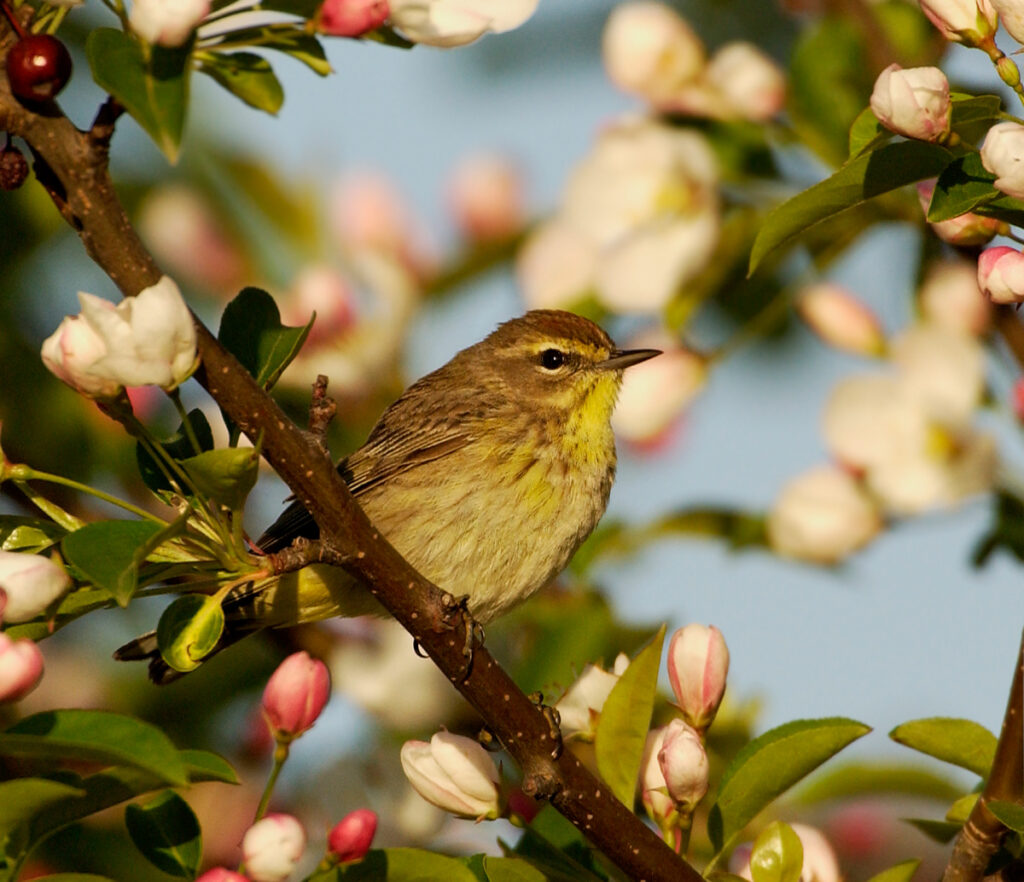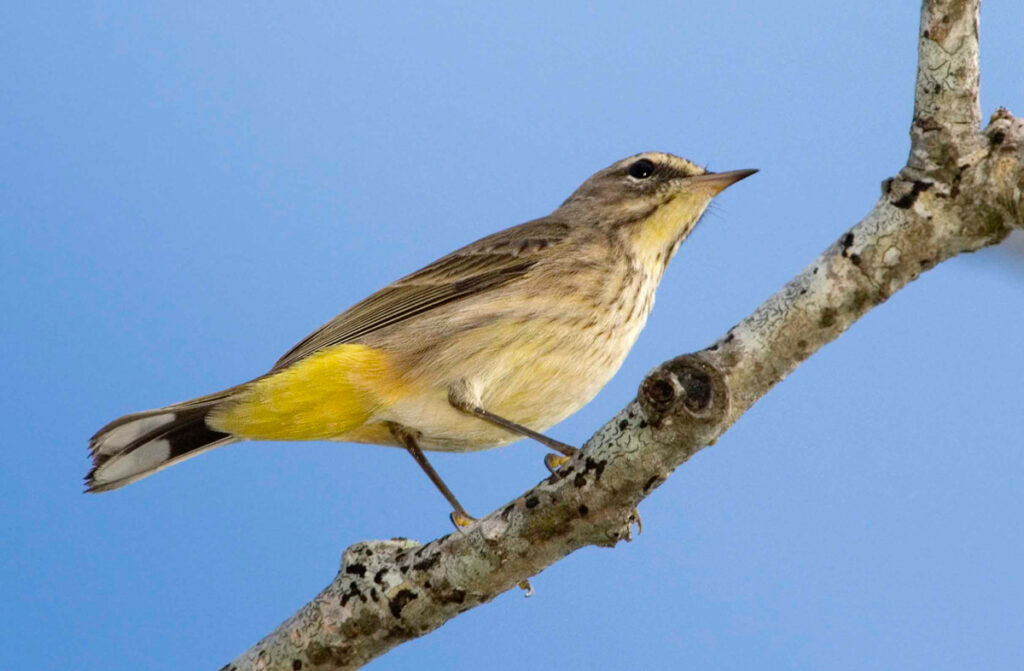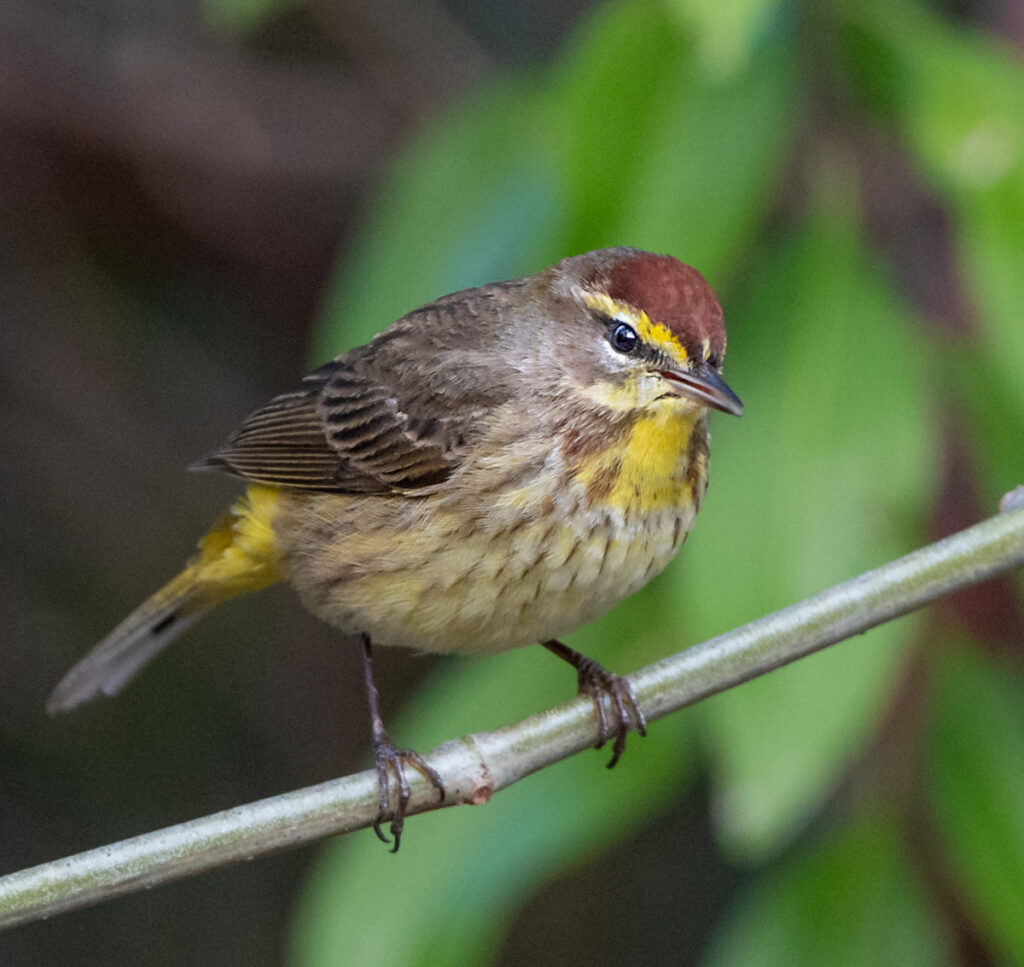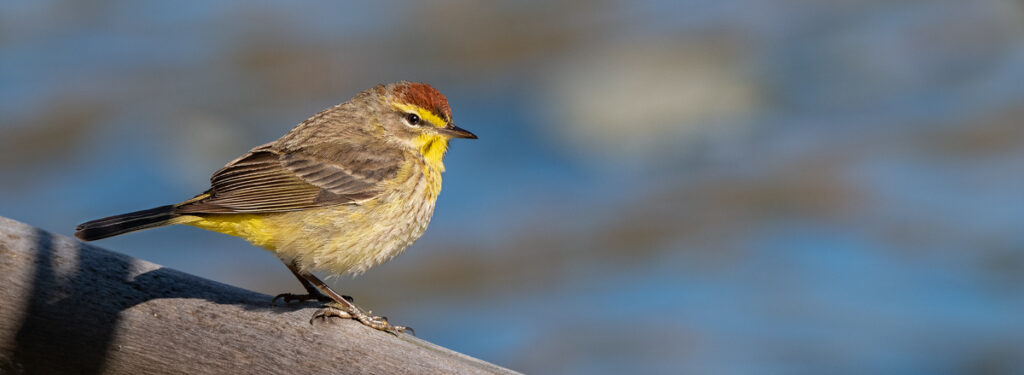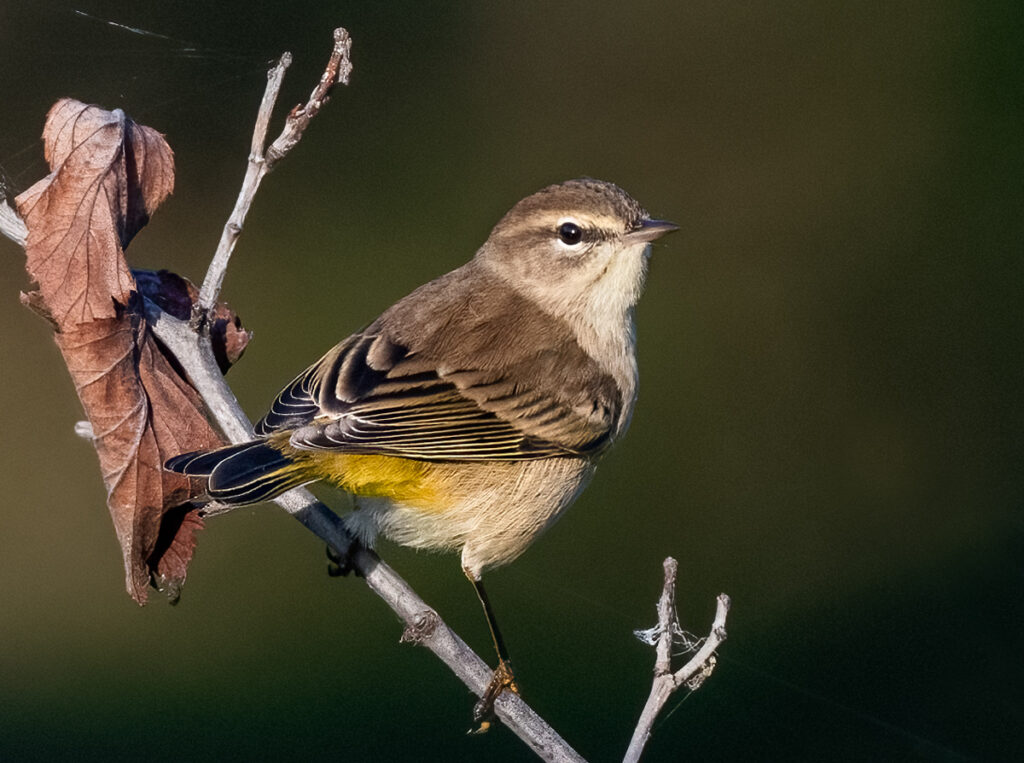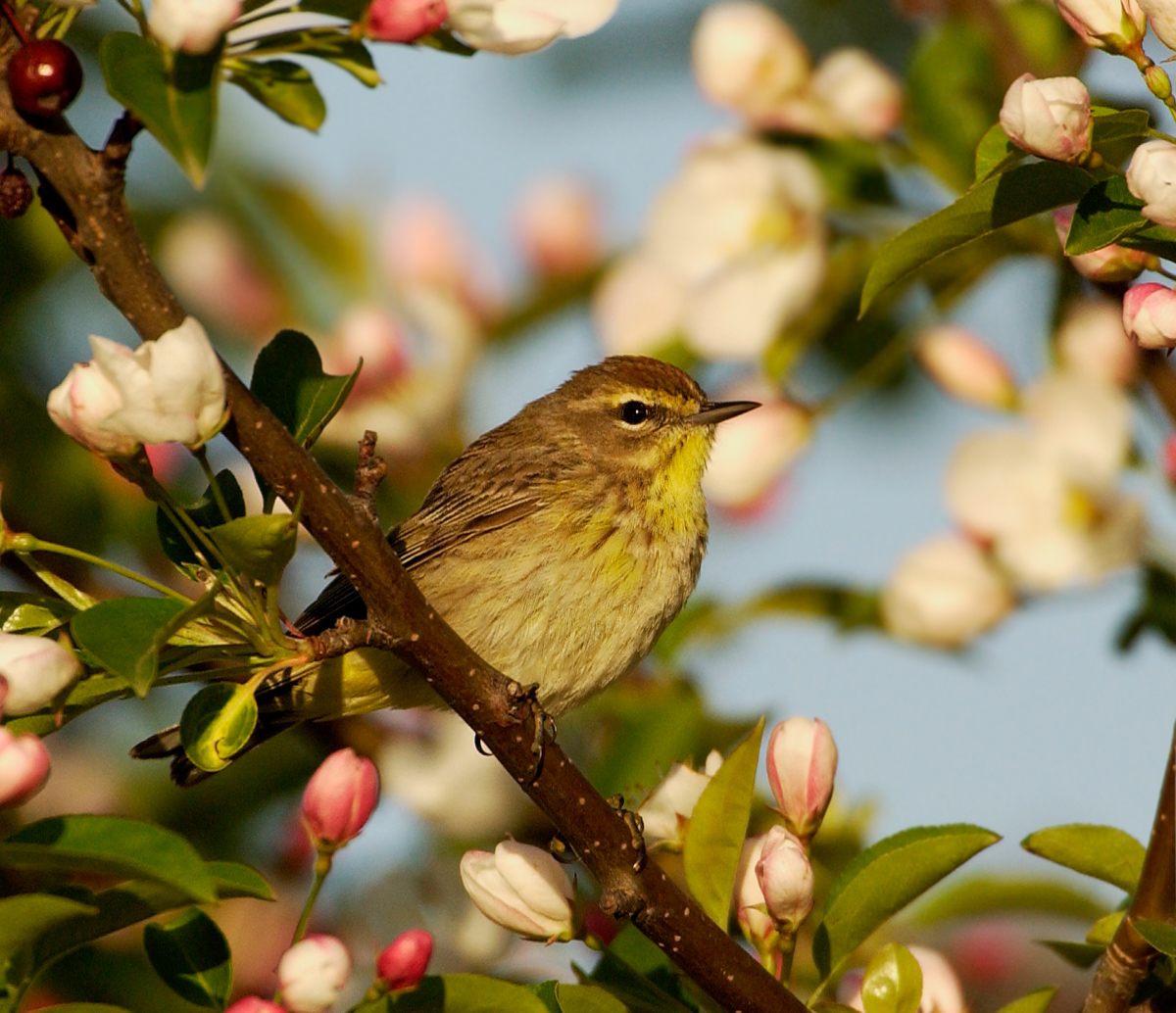
A bold and perky bird, the palm warbler can be an unexpected treat to see and to photograph – especially when these birds are often found far, far from palm trees.
About Palm Warblers
The palm warbler (Setophaga palmarum) is one of the more unique warblers, both in its range and its behavior. Despite its tropical-sounding name, palm warblers are one of the northernmost breeding warblers, spending the nesting season thousands of miles from palm trees and instead breeding in Canada’s boreal forest. In winter, they are indeed found among palms, as palm warblers spend the non-breeding season on Caribbean islands, the Yucatan peninsula of Mexico, in various parts of Central America, and in the very southeastern United States, including all of Florida. Palm warblers got their name during the winter season, when they were found and first classified among the palm trees of Hispaniola.
These small birds are classified as warblers, but rarely flit about high in trees like other warbler species. Instead, they are more often found hopping energetically on the ground as they seek out insects, darting to and fro as they vigorously pump or wag their tails – movement that is a key diagnostic point for palm warbler identification. They also forage low in trees and shrubs, hopping back and forth and plucking insects from branches and foliage.
These birds aren’t always as colorful as other warblers, but palm warblers have their own beautiful markings. They have bright yellow underneath their tails, and eastern birds can be very bright yellow on their underparts, especially in spring. Western birds show less yellow, but all palm warblers have delicate streaking on their flanks and a bold eyebrow stripe. Some rusty coloration shows on the head, but like the yellow plumage, it is brightest and most colorful in spring on eastern birds, and less noticeable in fall and winter or on western birds.
Palm Warbler Migration
Because these birds have extreme ends to their range – breeding in Canada and wintering largely in the Caribbean – most birders and bird photographers will most easily see palm warblers during migration in spring and fall. Palm warblers are also one of the earliest migrants, often on the move as early in spring as late March or early April, bringing the first signs of spring to northern regions. In fall, they start slowly traveling in mid- or late August.
These are the ideal times for bird photography, as both seasons provide colorful backgrounds to frame these charming birds. Palm warblers are easily found in parks, yards, weedy fields, scrubby patches, and forest edges. Watch for active flocks of ground birds, including sparrows and juncos, and check for palm warblers in the mix. Because they are bold birds, palm warblers are not typically skittish and can present great opportunities for dynamic photos of their activities.
To capture the best of palm warblers, get down to their level. This will present a unique perspective that brings bird lovers right into the birds’ world, showcasing palm warblers’ eccentricities and highlighting what makes these birds unique and enjoyable. The more people can enjoy and appreciate palm warblers, the better they will understand all different types of birds and their different habits.



